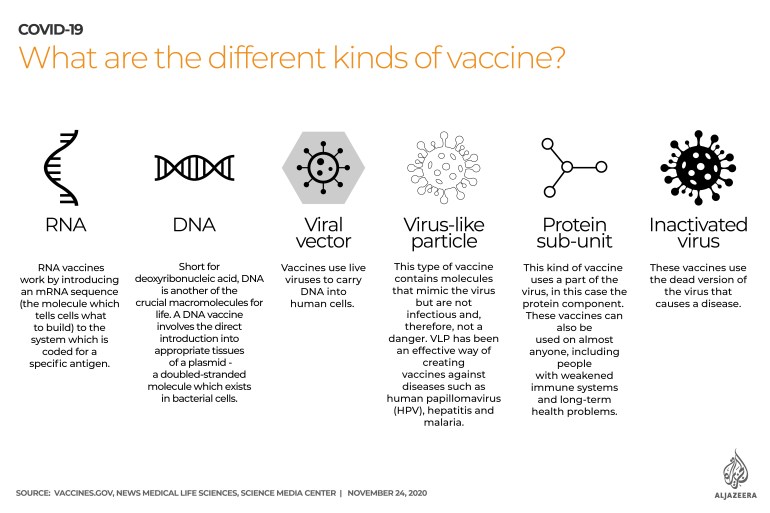Graphics: Global COVID vaccine distribution and inoculations
Vaccinations increase divide between affluent nations and poorer countries as roll-out continues across the world.

Many countries around the world have begun to vaccinate front-line workers and critical care patients after several COVID-19 vaccines became available in December last year.
The vaccination drive has revealed the divide between affluent nations and poorer countries amid an ongoing global roll-out. In some countries, the process of approval and acquisition of vaccines is continuing.
Keep reading
list of 3 itemsTwo ‘made in India’ COVID vaccines approved for emergency use
WHO lists Pfizer-BioNTech COVID vaccine for emergency use
Here’s all you need to know about the vaccination drive across the world:
How well is your country vaccinating its people?
Which vaccines have been approved?
Various vaccines manufactured in different parts of the world are now available.

What is the storage temperature for each vaccine?
The revolutionary technology of Pfizer-BioNTech and Moderna’s vaccines require significantly lower temperatures at -70 degrees C (-94˚F) and -20˚C (-4˚F) respectively.
The supply chain for these vaccines will be a challenge for the developing world who have existing refrigeration structures for vaccinations between 2-8˚C (35-46.4˚F).

How many doses does each vaccine require?
The time between the first and second inoculation in some vaccines vary between three to 12 weeks.
The only vaccine with a single dose is by China’s CanSino Biologics.

Is there a difference between vaccines?

How efficacious is each vaccine?
The newer kind of vaccine, the mRNA ones manufactured by Moderna and Pfizer-BioNTech, have the highest efficacy.
